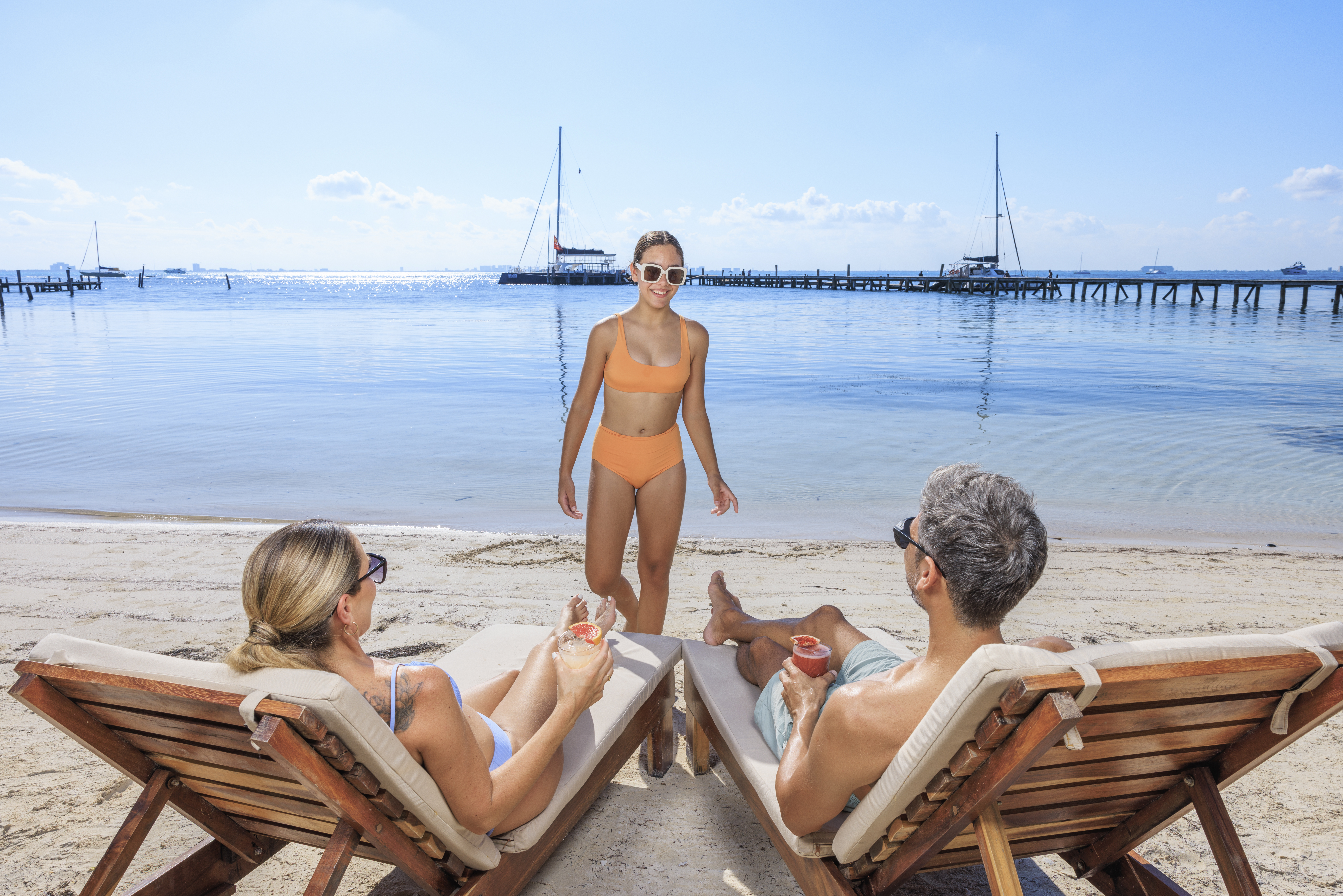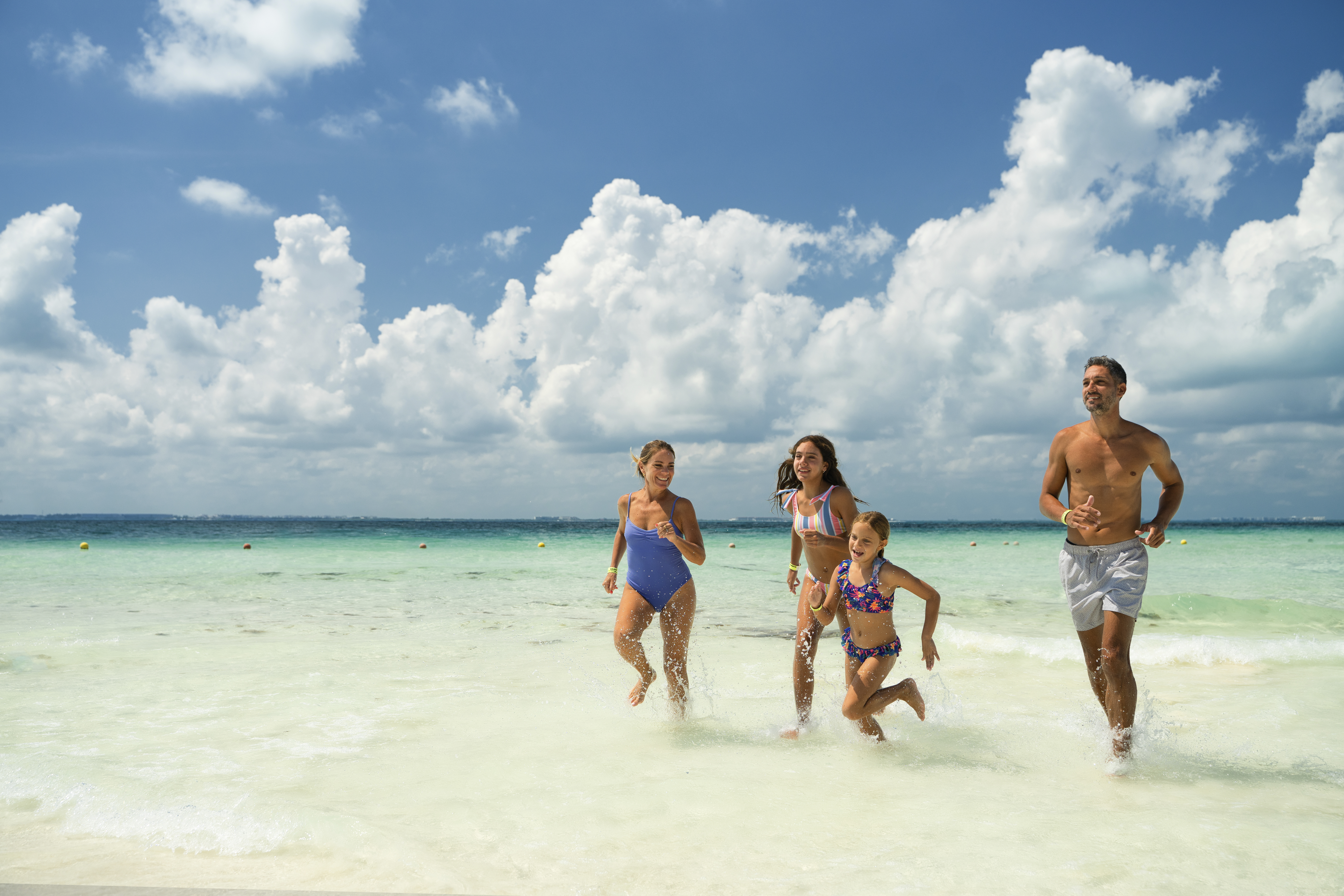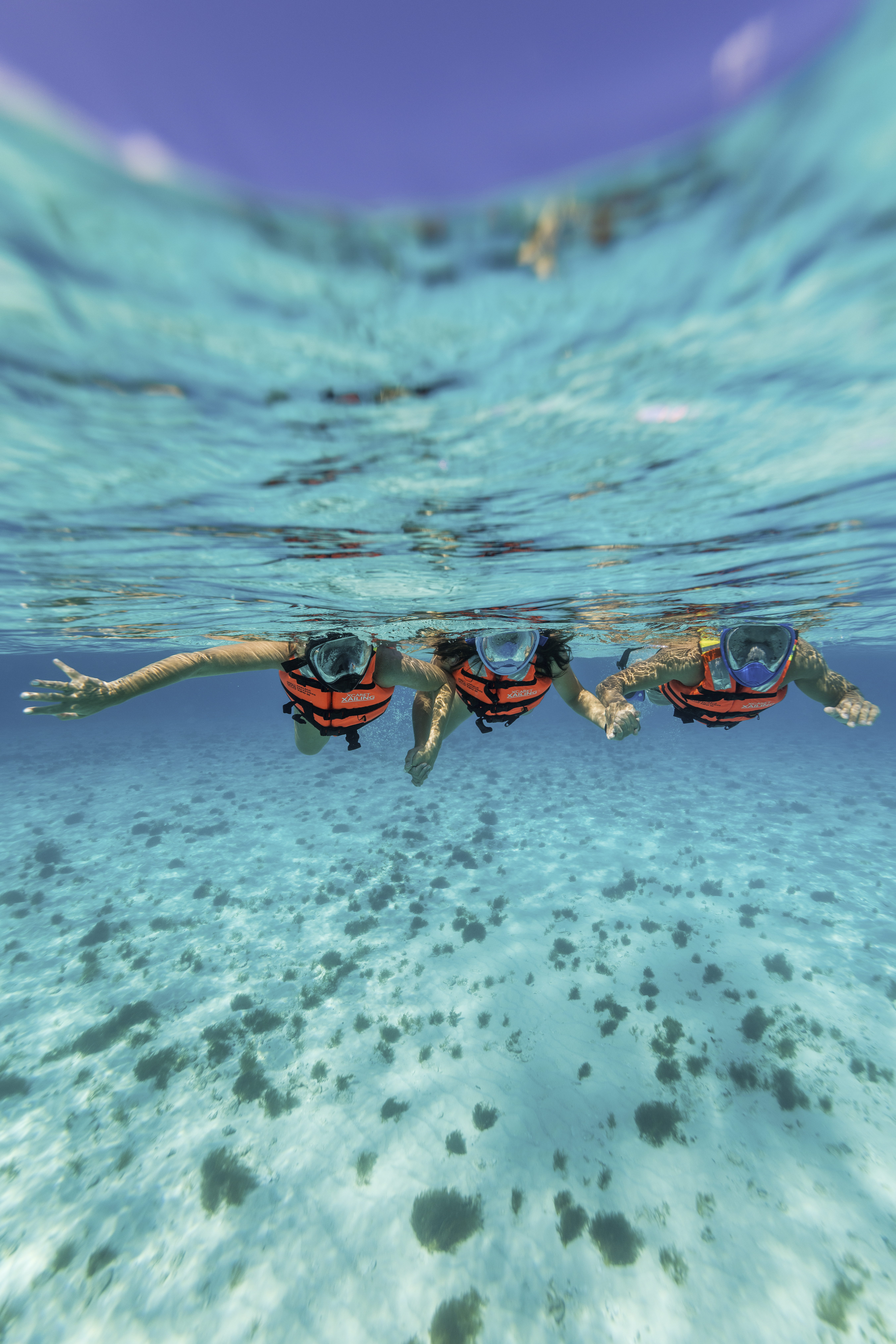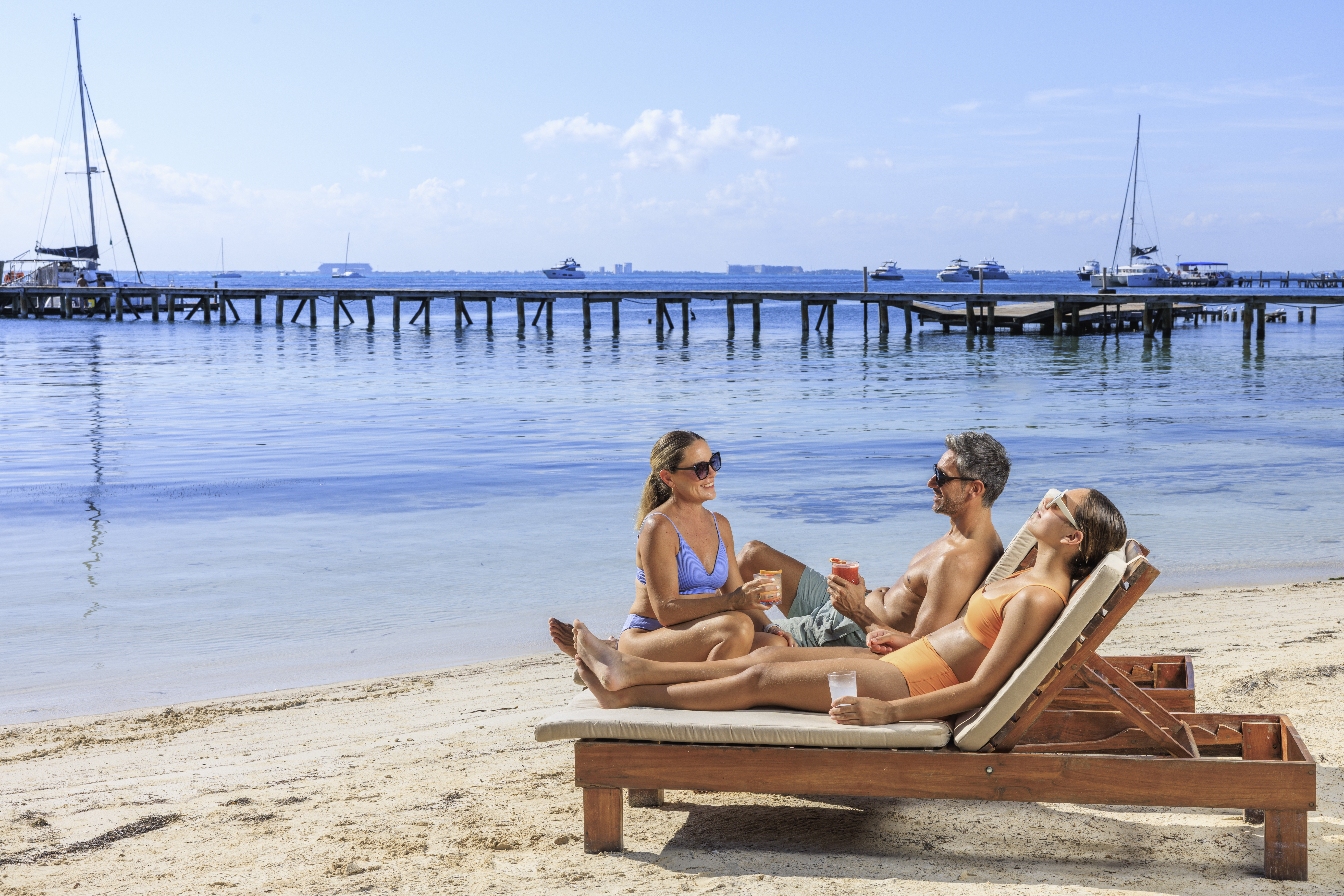Choosing the Best Reef-Safe Sunblock
July 07, 2025
Sunblock is a travel essential. It shields our skin from harmful UV rays, reducing the risk of sunburn and skin cancer.
But have you ever considered its impact on the environment?
Traditional sunscreens can harm marine life, particularly coral reefs. They contain chemicals like oxybenzone and octinoxate, which are toxic to these delicate ecosystems.
As a leisure traveler, you have a unique opportunity, you can decide toward more eco-friendly choices.
This includes choosing a sunblock that's effective and kind to our oceans.
This comprehensive guide will explore how to choose a good eco-friendly sunblock.
We will explore the disadvantages of conventional sunscreens, the advantages of using biodegradable options, and how to understand 'reef-safe' labels.
By the end, you'll be equipped with the knowledge to make informed decisions and advise your family accordingly. Let's dive in and make a splash in the world of eco-friendly sun protection.

Understanding Eco-Friendly Sunblock and Its Importance
Eco-friendly sunblock is designed with both your skin and the environment in mind. These products aim to prevent harm to marine life and natural ecosystems.
Traditional sunscreens often contain chemicals that threaten coral reefs, turning vibrant marine habitats into bleached, damaged areas.
Eco-friendly options help mitigate this damage. By choosing them, you're supporting marine conservation efforts globally.
An eco-friendly sunblock typically avoids harmful chemicals. Look for formulas that are free from oxybenzone and octinoxate.
Instead, they utilize safer alternatives, such as zinc oxide or titanium dioxide in non-nano form, which ensures they do not harm coral or marine creatures.
Choosing an eco-friendly sunblock also entails checking for certifications. Certifications like "reef-safe" or "biodegradable" are key indicators. They assure you that the product is formulated to minimize environmental impact.
Learn about the biggest threats to our oceans and how you can make a difference: What are the problems that exist in the ocean?

Here are some reasons why opting for an eco-friendly sunblock is essential:
- Protects marine biodiversity by reducing chemical pollutants.
- Supports sustainable tourism practices.
- Enhances the natural beauty of popular travel destinations by preserving coral reefs.
- Contributes to overall environmental conservation efforts.
- Encourages responsible consumer behavior.
Beyond environmental benefits, these sunblocks offer adequate skin protection and are suitable for sensitive skin types.
Switching to eco-friendly sunblock reflects conscious travel planning and a commitment to preserving the planet's beauty for future generations.
As travel planners, recommending these products aligns with sustainable travel values. It enhances client experiences by fostering a sense of responsibility and care for the environment.

The Environmental Impact of Traditional Sunscreens
Many people use sunscreen at the beach, but some contain chemicals that harm marine life. Ingredients like oxybenzone and octinoxate can bleach coral reefs, making it harder for them to heal and grow. This damage disrupts aquatic ecosystems.
When sunscreen washes off, these chemicals spread beyond the swimming area, affecting fish, plankton, and other aquatic creatures. The problem doesn’t stop in the ocean—pollutants can travel to lakes and rivers, harming more ecosystems.
Sunscreen chemicals can also affect young marine life, disrupting the food chain. Some even end up in the seafood we eat and in the water.
The good news? Choosing reef-safe sunscreens can help protect both your skin and the environment. As a travel planner, you can guide clients toward eco-friendly options that support marine conservation and sustainable tourism.

Harmful Ingredients to Avoid in Sunblock
Choosing an eco-friendly sunblock often starts with knowing what to avoid. Certain ingredients have significantly harmed aquatic life, prompting travelers to make more conscious choices.
Oxybenzone is one chemical to cross off your list. It's notorious for triggering coral bleaching. This compound affects coral and filters into the bodies of fish and other marine creatures.
Another culprit is octinoxate. This UV filter is damaging in its own right, impacting coral DNA and inhibiting growth. By avoiding it, you support healthier marine environments.
Some other less-discussed chemicals are also problematic. Octocrylene and homosalate, for example, have adverse effects on marine ecosystems. These chemicals accumulate in the environment, causing long-term damage.
Here's a helpful list of harmful ingredients to look out for:
- Oxybenzone
- Octinoxate
- Octocrylene
- Homosalate
- PABA
- Parabens
It doesn't stop with the obvious culprits. Some ingredients might not be clearly labeled, hidden under scientific names. It's crucial to read carefully and choose products that explicitly state they're free of harmful chemicals.
Diving more profoundly, nano-sized ingredients like zinc oxide can also pose risks.
Although they originate from natural minerals, their small size allows marine life to ingest them, possibly leading to health risks.
It's becoming increasingly important to support brands committed to transparency and sustainability. Look for certifications that guarantee a reef-safe product free of harmful components.
Finally, as leisure travel planners, educating clients about these ingredients enhances their travel experiences. It shifts the narrative from mere skin protection to encompassing environmental preservation. Thus, everyone can enjoy nature's beauty responsibly, one sunblock choice at a time.

Chemical vs. Physical Sunblocks: Environmental Considerations
Understanding the distinction between chemical and physical sunblocks is pivotal for eco-conscious sun protection. Both types serve the purpose of skin shielding, yet their environmental impacts differ significantly.
Chemical sunblocks work by absorbing UV rays. They contain ingredients like avobenzone and oxybenzone, which can harm marine life. Once these chemicals wash off in the ocean, they deteriorate coral reefs and disrupt aquatic ecosystems.
Conversely, physical sunblocks act as a barrier. They reflect UV rays, utilizing ingredients such as zinc oxide and titanium dioxide. While they're generally safer for reefs, their nanoparticles must be scrutinized. Eco-friendly versions use non-nano formulations to minimize environmental impact.
Choosing between chemical and physical sunblocks depends on personal preference and skin sensitivity. Physical sunblocks, being mineral-based, are ideal for sensitive skin types and are typically less irritating.
However, physical sunblocks often emerge as the better option regarding marine safety. They don't release harmful compounds into the water. Opting for non-nano versions and reading labels diligently ensures that the choice aligns with eco-friendly values.
Selecting the right sunblock involves balancing adequate skin protection with environmental responsibility. Making informed choices contributes to personal health and to preserving the planet's natural beauty.

The Benefits of Biodegradable Sunscreens
Biodegradable sunscreens are gaining popularity for their environmental benefits. Unlike traditional formulas, these sunscreens decompose naturally in the environment, reducing the risk of polluting oceans and harming marine life.
A key advantage is their ability to break down into non-toxic elements. This ensures minimal impact on aquatic ecosystems. With oceans covering over 70% of the Earth, protection efforts matter.
Moreover, biodegradable options are often kinder to our skin. They tend to include natural ingredients, reducing the likelihood of irritation. This dual benefit supports both personal well-being and environmental conservation.
As awareness grows, so does the range of available products. Consumers now have numerous choices that match their preferences and ethical considerations. Incorporating biodegradable sunscreens into daily routines fosters a sustainable approach to sun protection.
How to Read Sunblock Labels for Eco-Friendly Choices
Navigating sunblock labels can be daunting, but it is crucial for eco-friendliness. Deciphering these labels helps you make informed choices that benefit you and the planet. Look beyond marketing terms and focus on ingredient transparency.
Start by identifying harmful chemicals. Ingredients like oxybenzone and octinoxate are known to harm coral reefs. Choose products that clearly state they are free from these substances.
Here’s what to focus on when examining sunblock labels:
- Ingredients: Search for non-toxic, natural components.
- Certifications: Eco-certifications, like "reef-safe," confirm eco-friendly claims.
- Expiration Date: Outdated products may lose efficacy and can harm the environment.
Understanding these label components helps ensure the product aligns with your environmental values. Through conscientious choices, you contribute to the more significant cause of ocean conservation. It's a small step with considerable impact, promoting skin safety and ecological protection.

SPF and Eco-Friendliness: Finding the Balance
Finding the proper SPF is crucial to skin protection. Still, it should also complement your eco-friendly goals—an SPF between 30 and 50 offers optimal sun protection without overly complicating the ingredients in the formula. High SPF doesn't necessarily mean better; it often leads to added chemicals and reduced environmental mindfulness.
The balance lies in selecting an SPF that protects against UVA and UVB rays while considering ecological impact. Broad-spectrum formulas offer this dual protection efficiently. Ensure the formula is free from harmful additives that could disturb marine life when washed off.
Remember that skin protection should be robust yet uncomplicated in your quest for eco-friendly options. Emphasize performance and environmental impact together. By selecting a balanced SPF product, you can safeguard your skin while contributing positively to marine conservation efforts. This harmonious balance is achievable, providing peace of mind for both health and habitat.
Water Resistance and Its Relevance to Eco-Friendly Sunblock
Water resistance in sunblock is vital for outdoor activities but should not come at the cost of environmental health. When a sunblock touts water resistance, it minimizes the frequency of reapplication and remains on the skin longer, even during swimming or sweating. However, it’s essential to check that these formulations don't contain harmful chemicals released into water bodies.
Eco-friendly sunblocks offer water resistance through natural ingredients that provide a protective barrier without leaching pollutants. Ingredients like beeswax or plant-derived polymers accomplish this while being gentle on aquatic ecosystems.
Choosing eco-friendly sunblocks with water resistance means you can enjoy active adventures without worrying about ecological harm. It's a slight shift, ensuring that your leisurely swim or hike doesn't leave an unintended trace in our precious natural waters. Embrace the power of these formulations to shield both skin and sea life effectively.

Packaging and the Environmental Footprint of Sunblock
When choosing an eco-friendly sunblock, consider the packaging as part of your sustainability efforts. Many companies are now opting for biodegradable, recyclable, or reusable containers.
Look for products with minimal packaging or those using recycled materials. This significantly reduces waste and the environmental footprint. Pay attention to brands that participate in take-back programs or offer refill options.
These small yet impactful choices can reduce plastic pollution. By selecting products with sustainable packaging, you actively support a cleaner planet while responsibly enjoying your outdoor adventures.
Additional Sun Protection Measures to Complement Eco-Friendly Sunblock
While eco-friendly sunblock provides crucial protection, combining it with other measures enhances its effectiveness. Sun safety goes beyond just applying sunscreen; integrating various methods ensures comprehensive protection.
- Wear wide-brimmed hats and UV-blocking sunglasses.
- Opt for UV-protective clothing and swimwear.
- Seek shade during peak sun intensity hours.
- Use beach umbrellas or sun shelters on sunny days.
Incorporating these practices not only safeguards your skin but also reduces dependence on sunscreen. This benefits the environment by minimizing sunscreen runoff into aquatic ecosystems. Blending various protective measures makes outdoor experiences more enjoyable and less harmful to nature. Choose wisely and enjoy your adventures fully, knowing you are playing a part in preserving the planet.

Latest Research and Developments in Eco-Friendly Sunblock
The world of eco-friendly sunblock is ever-evolving. Researchers are continually exploring ways to enhance sun protection while minimizing environmental impact. Innovations focus on ingredient safety and sustainable manufacturing.
Recent advancements include the development of algae-based formulations. These offer adequate UV protection without harmful chemicals. Additionally, scientists are examining plant-based filters, providing an alternative to traditional mineral filters.
Significant strides have been made in biodegradability. Products now break down more effectively in natural environments. As research progresses, we can expect more exciting developments. These advancements promise to offer safer and more environmentally sound sun protection options soon.
Reputable Brands and Eco-Friendly Sunblock Products
It is crucial to choose sunblock from a reputable brand. These brands have established trust through transparency and commitment to the environment. They often have certifications verifying their eco-friendly claims.
Some brands lead the charge when it comes to eco-friendly sunblock. They prioritize skin health and marine conservation, and their products typically exclude harmful chemicals like oxybenzone and octinoxate.
Here are a few brands known for their eco-friendly options:
- Badger: Offers mineral sunscreens with organic ingredients.
- All Good: Known for its reef-safe, biodegradable products.
- Raw Elements: A favorite for its zero-waste packaging.
- Stream2Sea: Emphasizes ocean safety and tests products for biodegradability.
These brands exemplify dedication to both consumer safety and ecological integrity. When selecting sunblock, consider these brands that can align with sustainable travel choices.
Integrating Eco-Friendly Sunblock into Travel Planning
Incorporating eco-friendly sunblock into travel planning starts with awareness. Travel planners can guide clients to choose products that protect the skin and the environment. This aligns with the growing interest in sustainable travel practices.
Start by recommending eco-friendly sunblock options when crafting travel itineraries. Highlight destinations where eco-friendly sunblock is required or encouraged, such as Hawaii or certain parts of Mexico. These destinations often have regulations in place to protect their marine ecosystems.
Additionally, educating travelers about the benefits of eco-friendly products ensures informed choices. Encourage clients to consider the impact of their product choices on local environments. By doing so, travelers contribute positively to conserving destinations for future generations.
Making Informed Choices for Aquatic Ecosystems
Every purchase decision we make impacts aquatic ecosystems. By selecting eco-friendly sunblock, we make a powerful statement favoring marine conservation. These choices reflect our commitment to preserving the planet.
Your decisions as a traveler can inspire others to consider sustainability. Encourage peers to choose environmentally responsible sun protection.
Together, we can foster a shift toward products that safeguard both skin and sea, ensuring the continued vibrancy and health of our world’s precious aquatic habitats. Choose wisely and protect the oceans we all cherish.

Editora de Blog Xcaret. Comunicóloga que ama viajar, escribir, tomar fotografías y estar siempre rod...

Posts Relacionados
Grupo Xcaret
Hotels






